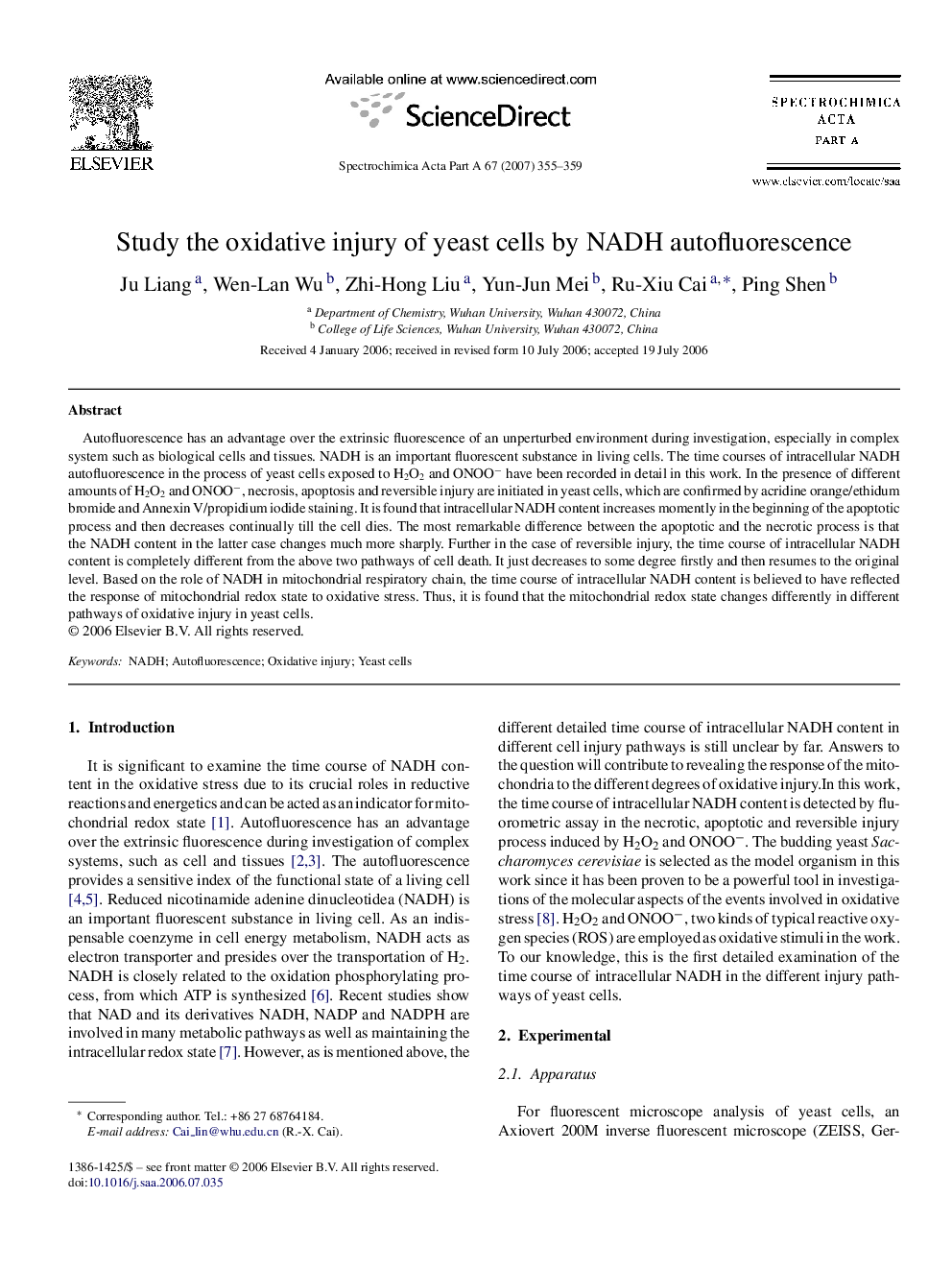| Article ID | Journal | Published Year | Pages | File Type |
|---|---|---|---|---|
| 1235420 | Spectrochimica Acta Part A: Molecular and Biomolecular Spectroscopy | 2007 | 5 Pages |
Autofluorescence has an advantage over the extrinsic fluorescence of an unperturbed environment during investigation, especially in complex system such as biological cells and tissues. NADH is an important fluorescent substance in living cells. The time courses of intracellular NADH autofluorescence in the process of yeast cells exposed to H2O2 and ONOO− have been recorded in detail in this work. In the presence of different amounts of H2O2 and ONOO−, necrosis, apoptosis and reversible injury are initiated in yeast cells, which are confirmed by acridine orange/ethidum bromide and Annexin V/propidium iodide staining. It is found that intracellular NADH content increases momently in the beginning of the apoptotic process and then decreases continually till the cell dies. The most remarkable difference between the apoptotic and the necrotic process is that the NADH content in the latter case changes much more sharply. Further in the case of reversible injury, the time course of intracellular NADH content is completely different from the above two pathways of cell death. It just decreases to some degree firstly and then resumes to the original level. Based on the role of NADH in mitochondrial respiratory chain, the time course of intracellular NADH content is believed to have reflected the response of mitochondrial redox state to oxidative stress. Thus, it is found that the mitochondrial redox state changes differently in different pathways of oxidative injury in yeast cells.
